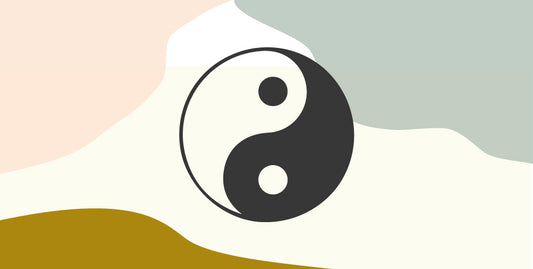
Set-Offers
Save when you buy a set
Shopping cart
Your shopping basket is empty
Yoga

Meditation
Bundles

| Wissen & Wirkung
Heaven and earth, day and night, ebb and flow - have you ever noticed that there are actually quite a few things that cannot exist without each other? If so, you already understand the yin-yang principle. The Chinese philosophy says precisely that: there are always two opposing forces in harmony with each other.

The principle of Yin and Yang is found in the Chinese "Book of Changes" (Yijing). The primary religious or philosophical context is Taoism/Daoism. While this may all sound a little foreign, the basic idea is quite simple: everything in the world has a necessary opposite pole.
According to yin-yang philosophy, two opposing forces always alternate: a high phase is followed by a low, movement is followed by rest, etc. You probably know this from your own everyday life; after all, on some days, you feel better, while on others, you have barely any energy and are in a bad mood.
When we think of Yin Yang, we usually think of the small, round, black and white symbol. However, this pretty little symbol, Taijitu in Chinese, does not actually stand for Yin Yang as a whole but only embodies the individual balance of forces. Next to it is Hotu, the Yin and Yang of the entire world.
When you hear the phrase, Yin Yang, the symbol that immediately comes to mind comprises a black and a white component. The black area (yin) stands for darkness, calm, passive receiving, the feminine and soft. White (yang), on the other hand, symbolises sun or brightness, warmth, active giving and masculinity.
By the way, you will also find this difference in yoga: Yin yoga is primarily about rest and pausing. Accordingly, all forms of yoga that focus on movements, such as Hatha yoga or Bikram yoga, are considered yang yoga.
Concerning the opposites that yin and yang stand for, the philosophy is often also applied to genders. Then there is talk of the contrast between a woman (yin) and man (yang), but sometimes also of the unity between tiger (yin) and dragon (yang). So what does this mean in concrete terms?
The division between the female yin and the male yang and the distinction between the active dragon and the more reserved tiger is based on the same principle: one cannot exist without the other. Tiger and dragon originate from Chinese zodiac signs. Basically, there are no significant differences in these interpretations of the yin-yang concept.
The balance of the two forces is also put into practice in traditional Chinese medicine (TCM). In this case, the organs are divided into active and passive functions, so yin is, for example, the heart, liver and lungs, while yang is found in the stomach, intestines and bladder. According to TCM, the activity of the individual organs is coordinated in the best possible way.
Yin and yang are, therefore, much more than a small symbolic figure - they can actually be found every day in our environment - after all, opposites are everywhere!
Find more exciting definitions under our blog category 'Knowledge & Effect'!

why do you meditate Why should you meditate? What brings meditation? One of the most common answers to this question is: to relieve stress. We all ...
Continue reading
Sun salutation, warrior and Co.: Everyone has probably heard of common yoga poses. In fact, yoga is not only about physical exercises, but also ab...
Continue reading
There are no comments yet. Be the first to leave a comment!